Triisobutyl phosphate
Synonym(s):Triisobutyl phosphate
- CAS NO.:126-71-6
- Empirical Formula: C12H27O4P
- Molecular Weight: 266.31
- MDL number: MFCD00039849
- EINECS: 204-798-3
- SAFETY DATA SHEET (SDS)
- Update Date: 2025-12-10 11:56:18
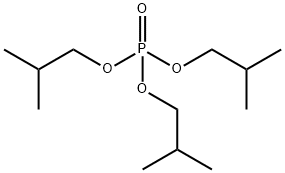
What is Triisobutyl phosphate?
Description
Advances in technological development over the last couple of centuries have led to the use of synthetic carbon-based polymers for everyday household and office items, where once wood or metal were desired. The high fuel values for some of these materials could pose danger where risk of combustion is high; therefore, flame retardants have been introduced into and coating for electronic devices. These substances have a broad application field and good fire safety performance.
The Uses of Triisobutyl phosphate
Phosphate esters are used as flame retardants, plasticizers,
hydraulic fluids, solvents, extraction agents, antifoam agents,
Partition behavior in water, sediment, and soil
Phosphate ester flame retardants enter the environment from
industrial sources and disposal of consumer products containing
flame retardants. These anthropogenic compounds
have been detected in water, soil, and air owing to widespread
use following their fast emergence and popularization during
1970s. Occurrence of these phosphate ester flame retardants is
widespread in surface water and groundwater because of the
leaching of PVC plastics and polyurethane foams, effluent from
industrial sources, and spills of hydraulic fluids. This primary
contaminated water is then transported to a secondary source,
such as drinking water. Hydrolysis, although slow because of
poor solubility and pH dependence, is the most important
abiotic elimination process. In soil and sediment, phosphate
ester flame retardants are persistent because they have the
tendency to adsorb strongly. Volatilization and biodegradation
are potential elimination processes for phosphate esters
adsorbed to soil.
Environmental persistency (degradation/speciation)
These retardants can change chemical composition in the
environment. Generally, most phosphate esters are poorly
soluble in water and adsorb strongly to soils. These compounds
are considered emerging pollutants because of their prevalence
and persistence in the environment. Particulate-phase phosphate
esters are subject to wet and dry deposition, whereas
semi-volatile phosphate esters have the potential to hydrolyze
to diesters, monoesters, and phosphoric acid. There is no
information available that suggests that selected phosphate
ester flame retardants undergo transformation or degradation
in the atmosphere.
Long-range transport
This is highly dependent on the specific compound.
Bioaccumulation and biomagnification
Phosphate esters are subject to biodegradation in aquatic and
terrestrial environments.
The Uses of Triisobutyl phosphate
Phosphoric Acid Tris(2-?methylpropyl) Ester is found in the groundwater downgradient of a landfill (Grindsted, Denmark). It is also a flame retardant and plasticizer.
Definition
ChEBI: Tri-isobutylphosphate is a trialkyl phosphate.
Flammability and Explosibility
Not classified
Environmental Fate
Routes and pathways relevant physicochemical properties
(e.g., solubility, Pow, Henry constant.)consumer and industrial items and play an important role in
safeguarding life and property. A large and diverse group of
anthropogenic compounds constitute flame retardants, which
are added to combustible materials to render them more
resistant to ignition. They are designed to minimize the risk of
a fire in the event of contact with a small heat source such as
a cigarette. A wide range of different flame retardants is
produced, because many materials and products that are to be
rendered fire safe are very different in nature and composition.
Therefore, having variety in flame retardant products is necessary
so as to retain key material functionality. For example,
plastics have a wide range of mechanical and chemical properties
and differ in combustion behavior. These materials in
particular are the main focus of phosphate ester flame
retardants.
Phosphate esters are derivatives of tri protic acid, phosphoric
acid, with a general formula of RxH3°xPO4. Flame retardants are
composed of a group of chemicals with similar properties but
slightly different structures. They are typically liquids and some
are solids at room temperature. Some examples of the phosphate
ester flame retardants include: tris(2-chloroethyl)phosphate
(TCEP), tributyl phosphate (TnBP), tris(2-butoxyethyl)
phosphate (TBEP), tris(1,3-dichloro-2-propyl) phosphate
(TDCP), triphenyl phosphate (TPP), tris(2-chloro-isopropyl)
phosphate (TCPP), and triisobutyl phosphate (TiBP). These
compounds are trisubstituted and categorized as alkyl (TnBP,
TiBP), alkyl ether (TBEP), chloroalkyl (TCEP, TCPP, TDCP),
and aryl (TPP) phosphate esters.
Purification Methods
Purify it by repeated crystallisation, from hexane, of its addition compound with uranyl nitrate. (see tributyl phosphate.) [Siddall J Am Chem Soc 81 4176 1959; see Cherbuliez in Organo Phosphorus Compounds (Kosolapoff & Maier eds) Wiley Vol 6 pp 211-577 1973.]
Properties of Triisobutyl phosphate
| Boiling point: | ~205 °C(lit.) |
| Density | 0.965 g/mL at 20 °C(lit.) |
| vapor pressure | 0.002 hPa (20 °C) |
| refractive index | n |
| Flash point: | 150 °C |
| storage temp. | Store below +30°C. |
| solubility | 0.26g/l |
| form | Oil |
| color | Colourless |
| Water Solubility | 264mg/L at 25℃ |
| CAS DataBase Reference | 126-71-6(CAS DataBase Reference) |
| EPA Substance Registry System | Triisobutyl phosphate (126-71-6) |
Safety information for Triisobutyl phosphate
| Signal word | Warning |
| Pictogram(s) |
 Exclamation Mark Irritant GHS07 |
| GHS Hazard Statements |
H317:Sensitisation, Skin |
| Precautionary Statement Codes |
P261:Avoid breathing dust/fume/gas/mist/vapours/spray. P272:Contaminated work clothing should not be allowed out of the workplace. P280:Wear protective gloves/protective clothing/eye protection/face protection. P302+P352:IF ON SKIN: wash with plenty of soap and water. P333+P313:IF SKIN irritation or rash occurs: Get medical advice/attention. |
Computed Descriptors for Triisobutyl phosphate
| InChIKey | HRKAMJBPFPHCSD-UHFFFAOYSA-N |
New Products
4,4-Difluoropiperidine hydrochloride tert-butyl 9-methoxy-3-azaspiro[5.5]undecane-3-carboxylate Indole Methyl Resin N-Isopropylurea N,N-Dicyclohexylcarbodiimide(DCC) MELDRUMS ACID 5-METHYLISOXAZOLE-4-CARBOXYLIC ACID Magnessium Bis glycinate Zinc ascorbate 1-bromo-2-butyne 2-acetamidophenol 9(10H)-anthracenone Erythrosin B, 4-Piperidinopiperidine 2-((4-morpholinophenylamino) (methylthio) methylene) malononitrile 2,4-dihydroxybenzaldehyde 3-(4-morpholinophenylamino)-5-amino-1H-pyrazole-4-carbonitrile Methyl 2-methylquinoline-6-carboxylate 2,6-dichloro-4-nitropyridine 4-Bromo-2-chlorobenzonitrile 2-(benzylamino)acetic acid hydrochloride 4-(tert-Butoxycarbonylamino)but- 2-ynoic acid 3,4-dihydro-2H-benzo[b][1,4]dioxepine 1-Phenyl-1-cycloprppanecarboxylicacidRelated products of tetrahydrofuran

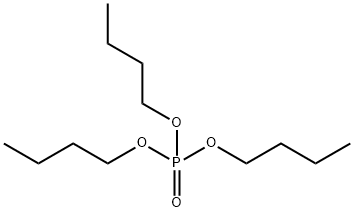
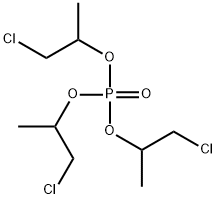
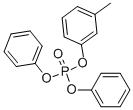
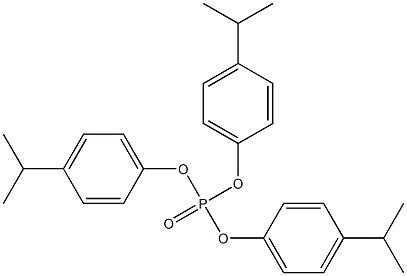

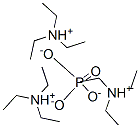
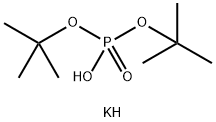
You may like
-
 126-71-6 98%View Details
126-71-6 98%View Details
126-71-6 -
 Triisobutyl phosphate 95% CAS 126-71-6View Details
Triisobutyl phosphate 95% CAS 126-71-6View Details
126-71-6 -
 Triisobutyl phosphate CAS 126-71-6View Details
Triisobutyl phosphate CAS 126-71-6View Details
126-71-6 -
 3-(4-amino-1-oxoisoindolin-2-yl)-1-methylpiperidine-2,6-dione 98%View Details
3-(4-amino-1-oxoisoindolin-2-yl)-1-methylpiperidine-2,6-dione 98%View Details -
 20677-73-0 (2,2-diethoxyethyl)methylamine 98%View Details
20677-73-0 (2,2-diethoxyethyl)methylamine 98%View Details
20677-73-0 -
 3-(4-(hydroxyamino)-1-oxoisoindolin-2-yl)piperidine-2,6-dione 98%View Details
3-(4-(hydroxyamino)-1-oxoisoindolin-2-yl)piperidine-2,6-dione 98%View Details -
 57381-49-4 2-bromo-4-chlorobenzonitrile 98%View Details
57381-49-4 2-bromo-4-chlorobenzonitrile 98%View Details
57381-49-4 -
 4,6-dichloropyrimidine-5-carbaldehyde 98%View Details
4,6-dichloropyrimidine-5-carbaldehyde 98%View Details
5305-40-8
